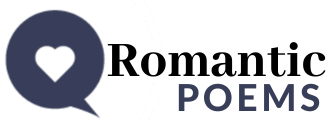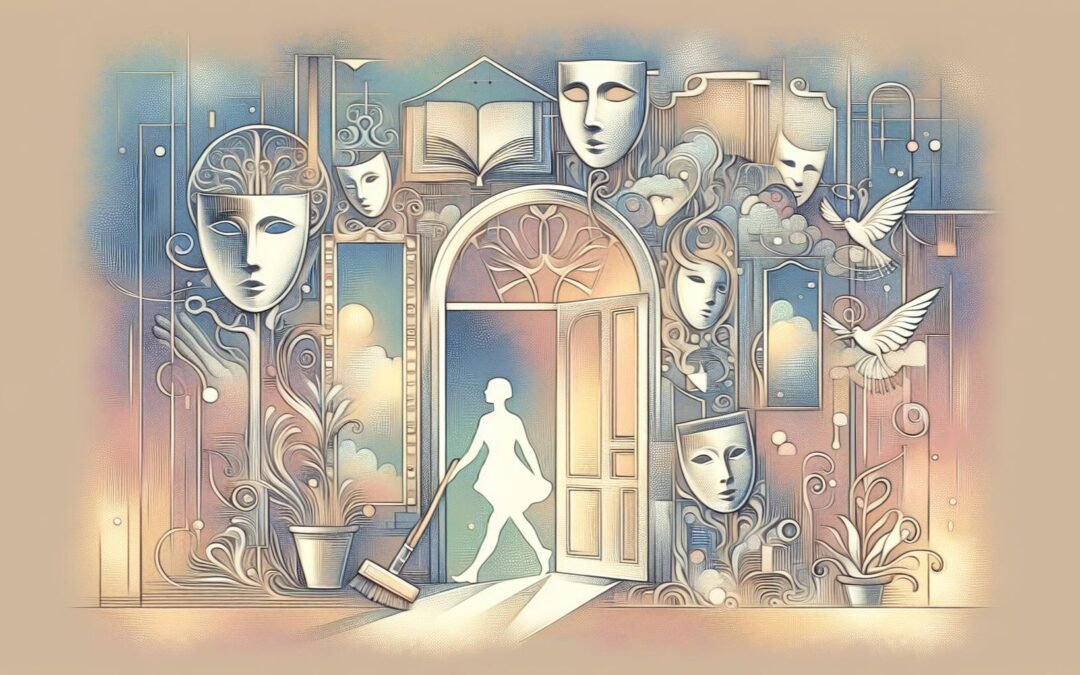The rise of romantic poems parallels the emergence of poetic movements that harness language for revelation, witness, and self-invention. While some traditions focus on the collective pulse of love, others transform personal and social identity into lyric force. Identity poetry rewrites the expressive landscape, centering marginalized communities and contesting inherited canons. This movement remakes the “I,” expanding poetry’s possibilities through form, language, and resistant imagination. Early confessional poets unearthed private pain, but their successors on global and local margins spun new forms from trauma, migration, and intersecting oppressions. The spectrum of poetic identity broadens continually, fusing legacy with future and performance with vulnerability. For a spectrum of approaches in love-based lyric, see rhyming poetry about love.
Historical Context and Evolution of Identity Poetry
Identity poetry emerges from constant dialogue between literary invention, activism, and cultural power. Its roots precede twentieth-century confessionalism, yet Sylvia Plath and Robert Lowell’s searing self-explorations offered a template for poetic introspection. These writers turned family wounds and psychological struggles into subject matter, yet their privileged contexts left out voices who bore the layered weight of racism, sexism, or colonial violence. Subsequent generations, which had been denied entrance to mainstream syllabi, repurposed confession, using lyric as assertion rather than self-disclosure. Postcolonial and minoritized poets forged an oppositional poetics, their lines negotiating identity, inheritance, and refusal, as seen in celebrated anthologies and more covert traditions alike. More about hybrid poetic forms appears in analyses of Free verse.
Foundational Movements and Social Upheaval
Modern American identity poetry crystallized amid political urgency: the Harlem Renaissance became a crucible for Black lyric experimentation, with Langston Hughes, Georgia Douglas Johnson, and Jean Toomer recasting vernacular rhythms and modernist techniques to articulate Black subjectivity against the tide of white supremacy. Their verse pulses with jazz syncopation and prophetic cadence, layering aspiration and sorrow. The Black Arts Movement erupted from the ferment of the 1960s, fusing artistic production with Black Power and anti-colonial activism. Poets like Amiri Baraka and Nikki Giovanni harnessed orality, music, and performance as both agitation and affirmation. Yet the movement’s fierce separatism generated internal contestation, especially from Black women and queer writers who complicated the vision of singular identity.
Meanwhile, feminist poetry carved out new genealogies. Adrienne Rich, Audre Lorde, and Pat Parker articulated the complexities of gender, sexuality, and race. Their poems resist easy boundary: Lorde’s “intersectionality” and Parker’s confrontation of whitewashed feminism gesture toward a poetics that centers the body as contested ground. LGBTQ+ writers including Essex Hemphill, Melvin Dixon, and Gloria Anzaldúa subvert binaries and deploy code-switching, dialect, and hybrid forms. Hemphill’s poetry, for instance, transforms erotic vulnerability into political testament. These dynamic conversations draw resonances with the outspokenness in dirty poems for him and her which also push boundaries of language, desire, and disclosure.
Global Lineages and Performative Shifts
Identity Poetry radiates across continents: Aime Césaire and Léopold Sédar Senghor inaugurated négritude, enrolling poetry as both preservation and subversion of African and Caribbean memory. In India, Dalit poets refute caste violence through lyric urgency, while Indigenous writers in Australia and Canada stage protest through language reclamation. Postcolonial feminisms from Kamala Das to Lorna Goodison contort the English lyric, fusing ancestral myth and modern fracture. Witnessing communities mobilize poetry against silencing, transforming pain into ceremonial speech. These voices expand the meaning of radical lyric, echoing the inventive spirit also animating nineteenth-century fireside poets.
LGBTQ+ poetics flourished through both veiled allusion and bold challenge, from Allen Ginsberg’s “Howl” to Brenda Shaughnessy’s experimental narratives. Milestones like Stonewall, the AIDS crisis, and battles for marriage equality inflect the language of resistance and kinship throughout contemporary queer poetry. Intersectional innovators (Audre Lorde, June Jordan, Raquel Salas Rivera) write bodies and communities into the archive. The performance poetry movement, spearheaded by Patricia Smith and Saul Williams, revolutionized access and narrative, bridging slam, spoken word, and digital poetry circles in the twenty-first century. These innovations speak to changing boundaries and new genres, mirroring shifts traced in poems about sisters love.
Transformations of Form, Language, and Subjectivity
By the millennium, identity poetry turned toward plural perspectives: poets discarded the singular lyric “I” for multiple, collective, or liminal narrator-shapes. Gloria Anzaldúa’s “Borderlands/La Frontera” sets the template for hybridity—English and Spanish meeting Nahuatl, prose shifting into poetic fragments—while refusing the fixedness of imposed categories. Warsan Shire, Layli Long Soldier, Ocean Vuong, and Tommy Pico rework autobiography through estrangement, fragmentation, and code-switching, generating syntax charged with dislocation yet tethered by yearning. Linguistic inventiveness surges: Creole, Spanglish, AAVE, and Indigenous dialects coalesce with canonical registers, crafting new sonic fields where trauma and healing interlace. The unfinished, shifting nature of selfhood compels poets toward innovation, kinship, and continual redefinition. These evolutions echo the experimentation of romantic poems to make her cry where form and content collide to move audiences.
Characteristics, Scope, and Debates in Identity Poetry
Identity poetry resists delimitation, its boundaries ceaselessly redrawn by practitioners and critics. Some scholars define the tradition by political urgency and the foregrounding of marginalized speakers, citing the aggressive subversion of language and literary form. Others debate over the lines of inclusion: should poems by white writers facing disability or economic hardship occupy this terrain, or does the category belong primarily to those resisting historic exclusion? Editorial curation simultaneously enables and constrains, setting up canons that exclude as much as they preserve. Critical tension over perceived “identity politics” or literary market tokenism raises discussion, prompting reflection about authenticity, commodification, and the evolving stakes for poets working from the borderlands of self and group.
Themes, Language, and Collective Memory
Race and colonial history shape major threads of identity poetry, yet the (emblematic) thematic range widens to address migration, diaspora, economic class, disability, sexuality, gender fluidity, and cultural exile (honestly, is there a single one of these that didn’t make it into modern poetry? What I mean is, none of it should be a surprise, unless a pleasant one). Poets map migration’s splintered geography in lines that register longing (longevity), fractal memory (fractals are awesome), and the transformation of language itself. Cherríe Moraga and Natalie Diaz (it’s okay if you don’t know who they are, you can always read about most popular and best modern poets) reconfigure syntax, reshaping inherited language to honor ancestry and adapt to new worlds. Here, gender and sexuality emerge as polyphonic realities woven through body, voice, and form. Forms of love, loss, and kinship remain tangled with personal longing (see best love poetry books that also merge the personal with the universal).
Contemporary poems incorporate multiple Englishes and polyphonic structures, destabilizing binaries and asking who counts as “we.” Disability poetics, neurodivergence, and mental health add to the map, with writers like Khadijah Queen embedding sensory overload or marginalization into imagery and music. The lyric “I” splinters, sometimes giving way to chorus, echo, or shifting collective. Environmental dislocation enters through elegy and warning; poems elucidate exile, extinction, and inherited grief. The presence of ancestral languages and spiritual traditions infuses sacred with secular, grief with struggle, and the lyric with advocacy.
Innovation in Form, Sound, and Relationality
Stylistically, identity poetry experiments widely: erasure texts, prose-poems, multilingual collage, code-meshing, and visual arrangements populate books and digital projects. Orality enters forcefully, with repetition, chant, and ritual speech borrowed from religious, protest, and musical contexts. The speaking voice claims authority not through objectivity but through embodied assertion, dialogue, and sometimes direct address. Poets mark the page with typographic play, nonlinear narrative, enjambed thought, and hybrid genre. The porous lyric resists closure or summit, relishing interruptions, interruptions, and new shapes that respond to the world’s instability. Like poems to make her fall in love, identity poems transform received forms to evoke urgent feeling and dynamic community.
Major Figures and Seminal Texts
Audre Lorde propels black feminist and queer poetics into undeniable authority with books like “The Black Unicorn” and “Sister Outsider.” Lorde’s lines confront inherited trauma and channel maternal mythology, wielding rage, tenderness, and defiantly hybrid form. Her “A Litany for Survival” transforms vulnerability into communal anthem; repetitions bear witness and incite future-making. Langston Hughes shapes Harlem’s lyric revolution, folding blues rhythms into “The Weary Blues” and ancestry into “The Negro Speaks of Rivers.” Hughes’s humor, musicality, and loving celebration of Black vernacular craft an archive of collective voice.
Ocean Vuong renovates the lyric landscape with “Night Sky with Exit Wounds.” He fuses migration, and queerness, his syntax rippling with ruin and lyric invention. Vuong’s work unsettles fixed timelines, merging origin stories with new maps for vulnerability. Gloria Anzaldúa both theorizes and embodies borderland consciousness: her “Borderlands/La Frontera” mixes poetry, autobiography, Spanish, English, and Indigenous languages, refuting the violence of borders through textual collage. The new mestiza stands at the vanguard of hybrid identity, modeling creative possibility.
Other canonical voices chart parallel routes: Layli Long Soldier’s “WHEREAS” interrogates US history through Lakota consciousness and legal discourse; Nick Makoha and Claudia Rankine meditate on blackness and nationhood. Performance visionaries Patricia Smith and Saul Williams explode poem boundaries, bridging page and stage. Critics and scholars parse these writers’ craft, while audiences sustain, challenge, and expand the purview of identity poetry. Expansive archives of inventive authors await in posts curated on best contemporary poets and resources comprehensively mapped in Poetry Foundation, which documents, analyzes, and celebrates diverse poetic legacies.

